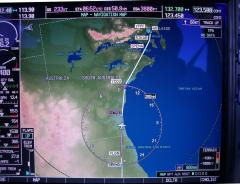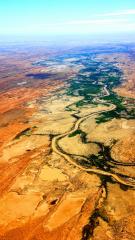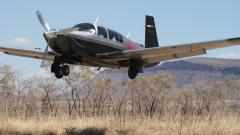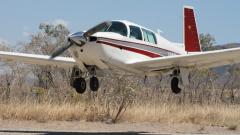-
Posts
135 -
Joined
-
Last visited
-
Days Won
1
Content Type
Profiles
Forums
Blogs
Gallery
Downloads
Media Demo
Events
Everything posted by 29-0363
-
Docket, The connector has 5 internal keyways, 4 pins and 3 bayonet pins. It reads "DEUTSCH DTK1H-8-4P 11139 0538C. If you need any further info PM me with your email address. ://
- 15 replies
-
- Manifold
- transducer
-
(and 3 more)
Tagged with:
-
Docket, I don't have quite what you need, but I have a MP Transducer for a 2005 Ovation GX2. It reads: PRESSURE TRANSDUCER MANIFOLD PRESSURE KSP P/N APT-20G-1000-25A S/N 7133-4-245 RANGE 0-25 PSIA MFG DATE 12/05 EXCITATION 5VDC KULITE, LEONIA NJ USA TSO-C45A
- 15 replies
-
- 1
-

-
- Manifold
- transducer
-
(and 3 more)
Tagged with:
-
Quote: 231flyer I'm wanting to buy a mileage based fare with One World Alliance (CX QF AA) that's called "Circle Pacific" which allows me to fly to ORD via SYD and HKG, then after Oshkosh to JFK, LAS, LAX, SYD. The rules for the fare are restrictive unless the ticket is issued from Canada, and the added bonus is the ticket costs a lot less as well. For example, I can buy a ticket in Australia for (round figures) AUD$5,000, and the same ticket purchased in New Zealand is NZD$5,000 which converted to AUD is $3,900, but the catch is I have to start the trip from NZ. If I can buy the ticket from Canada the restrictive ticketing rules do not apply and I can start the journey in any country I choose, so I can save something like 25%. If I travel up the pointy end in Business or First Class, the saving can be between 3 or 4K.
-
Can anyone on this list help me find/introduce me to a reputable travel agency in Canada? I want to make it to Oshkosh from Australia and the fare is far cheaper and more flexible if I buy it from Canada even though I start and finish my journey in Australia.
-
Do you need a new scoop to replace one damaged by a nose gear collapse? IIRC they are made of fiberglass and can be repaired if not too badly damaged. The engine cowl bottom half on my first M20R was successfully repaired after a NGC and the Insurance Assessor had written it off.
-
The NTSB Report on this accident is now available on line here: http://www.ntsb.gov/aviationquery/brief2.aspx?ev_id=20101125X11507&ntsbno=WPR11FA059&akey=1 The report has findings (excerpts cut and pasted below) which are at odds with an earlier post by the pilot of the other aircraft VH-PPP was to fly in company with. Significantly, there were some sobering findings that remind us there are risks when you operate outside of the envelope. In summary, there were four items that, each in isolation should not have contributed to the crash, but in entirety might have compounded a normally insignificant event into a tragic outome. The pilot was well qualified and experienced (including aerobatics), but it would seem none on the Mooney airframe except for the flight from the point of purchase.. The aircraft was approved to operate at MTOW plus 15% over but calculated to be about MTOW plus 22%.. The fitting of the ferry tank bladder was not in accordance with the Special Flight Permit issued by the Australian Civil Aviation Safety Authority, in that it was not properly secured and relied on being a snug fit between the sides of the fuselage and some suitcases to prevent aft travel. The post crash W+B determination found the CG was 0.79 outside (aft) of the envelope. The NTSB inspection could find no reason why the engine should not deliver power. There was also some discussion about the erratic operation of the Autopilot. The paperwork and other documentation for MTOW plus 15% was provided by a very experienced ferry operation in Kempsey, NSW, Australia who have facilitated the import of quite a few M20R and M20TN into Australia (including 29-0363). FERRY CONFIGURATION INCREASED MTOW The Operating Instructions for the ferry tank system referred to Mooney engineering instructions, which allow for a one-time 15 percent increase in maximum takeoff weight (MTOW) totaling 3,873 pounds. Under this condition, the center of gravity range must be between 47.5 and 51.0 inches. Additionally, the never exceed speed (Vne) varies linearly between 174 knots at the airplane's standard MTOW of 3,368 pounds through to 124 KIAS at 3,873 pounds. (the calculated MTOW was 4,128 lb) Here are the CASA documents relating to the Ferry Authorisation. It seems they were released under the FOI (Freedom of Information). http://www.casa.gov.au/wcmswr/_assets/main/lib100096/foi-ef11-2905.pdf FERRY TANK SYSTEM Examination of the airplane wreckage revealed that no bladder tank support straps were installed. The bladder was additionally equipped with orange tie-down straps, stitched into the bladder material, but these were also not attached to the fuselage structure. The aft seat belts were still in place, and had not been removed to make room for the tank straps. Examination of the bladder tank fragments revealed that it was a 238-gallon-capacity air cargo type, manufactured by Turtle-Pac. Two 7-foot-long sections of 1/2-inch thick plywood had been installed across the full width of the fuselage spanning from the back of the front seat through to the baggage compartment. The plywood obscured access to the aft seat belt anchor points. Additional plywood strips and foam padding were located along the inner fuselage sidewalls. The airplane was equipped with baggage tie-down straps. The lower straps were located underneath the plywood, and as such, were obscured from a position where they could be utilized to secure the baggage. The pilot installed the fuel ferry system, 2 days prior to the accident. Review of the airplane's maintenance records revealed that on November 23, 2010, a certified Airframe and Powerplant mechanic found the airplane's ferry fuel system fit for flight. In a subsequent interview with the IIC, the mechanic stated that he observed yellow tie down straps installed over the bladder tank at the time of the inspection. The pilot of the other Mooney stated that prior to departure, the tank in the accident airplane was positioned behind the pilot seat, and held in place by the airplane's sidewalls and luggage in the aft baggage area. Fueling records obtained from Gavilan Aviation, Inc., revealed that the airplane was serviced with the addition of 210 gallons of aviation gasoline at 1730 the night prior to the accident. The pilot of the other airplane reported that the wing fuel tanks were emptied during the installation of the ferry fuel system, and as such, the fuel purchased reflected the total fuel onboard. WEIGHT AND BALANCE A weight and balance report, dated November 2004, was located in the airplane. The report indicated a basic empty weight of 2,400.4 pounds. No weight and balance sheet referring to the airplane in the ferry flight configuration was located. The following approximate loading information was garnered during the on-scene, and follow-up examinations. The weight within the forward cabin area, which included the pilot, baggage, water, and the fuel transfer pump system, was about 285 pounds. The aft seat area, which contained the bladder fuel tank, its associated plywood supports, long-range radio, and an assumed total fuel of 121 gallons, was about 722 pounds. The equipment in the aft baggage area totaled about 187 pounds, and included both aft seats, plywood supports, additional water, baggage, and a life raft. According to the Mooney Pilot Operating Handbook (POH), the maximum allowable weight in the baggage area was 120 pounds. The wing fuel tanks, with a usable capacity of 89 gallons, were estimated to contain about 534 pounds of fuel. Based on these values, the airplane's weight at takeoff was about 4,128.4 pounds, 255.4 pounds in excess of the MTOW in the ferry tank configuration, and 760 pounds beyond the standard MTOW. Extrapolation of the weights and cargo positions based on the Mooney loading graph, resulted in a center of gravity position of 51.79 inches, 0.79 inches beyond the aft center of gravity limit. ENGINE OPERATION No anomalies were noted, which would have precluded normal engine operation. Refer to the public docket for the complete airframe and engine report. THE PILOT The pilot was an Australian citizen, and his flight experience information was provided by the Australian Transport Safety Bureau (ATSB). Review of his logbooks by the ATSB revealed that the last entry was recorded on April 24, 2010. At that time, he had accrued a total of 2,540.3 flight hours. The records revealed that the pilot had flown seven multi-legged international ferry flights, three of which were on the same initial route as the accident flight. No prior Mooney aircraft experience was noted in the logbooks.
-
johnggreen is 100% correct in his understanding of how one might survive an airplane crash, or in the alternative, what will kill you. It's all about the rate of deceleration, and why if you are ever in a life threatening situation you must try and maintain control of your crash if possible. The steel cage of the Mooney might protect you from intrusion of airplane parts and external objects, and the human body can stand an awful lot of "G" force, but your internal organs and brain just can't tolerate the sudden impact against the inside of your chest cavity or your skull. I always remember a Baron that had a CFIT on a night approach to an airport not too far from where I live, where both pilot (who I knew and had once worked for) was killed, along with his passenger. The Baron looked almost unscathed, like it needed new props and it would fly again, so it wasn't the integrity of the airframe or a steel cage that might have saved these guys. As I was led to understand it, their fatal injuries were caused by vertical rather than forward deceleration. Stay safe!
-

how is it like to breathe oxygen at high alts
29-0363 replied to bd32322's topic in General Mooney Talk
There is far more to high altitude flight than just hypoxia - most people think that Decompression Sickness (aka DCS or "the bends") is a hazard for deep sea divers, but it can and does affect pilots as well. Some people will show symptoms from a long exposure at FL180 (4-5 hours), while others might operate at FL250 without any symptoms at all. I believe females are more affected than males because of their tissue make-up (I didn't want to use the word fat), and unpressurised high altitude flight within 24 hours of scuba diving can be serious if not fatal. Older folk may also be more affected. For further reading search on Avweb under aeromedical topics, or Wikipedia under Decompression Sickness. -
The built-in AVOX O2 tank has to be retired from service after 15 years, so I guess there must be some folks on this list with a M20R or M20M that will have replaced theirs in the last few years. I would appreciate input from the list as to whereabouts they purchased the replacement tank, and roughly what they would have paid.
-
I had a Concorde RG24-15 battery in my Ovation GX2, that failed after about 14 months while still within their warranty period. Despite numerous emails, providing proof of installation date (new at MAC) and warranty card properly completed, Concorde did nothing and further emails were ignored. Despite their poor performance WRT warranty, I feel their batteries are superior to other brands.
-
I experienced assymetric speed brake operation on my first Ovation and did the investigation as to why. Providing the microswitches are OK, the circuitry should prevent one operating without the other, so it was a mechanical issue I was looking for. The S/B was disassembled and part of the drive mechanism consists of split bronze bushes with a flat wound spring (similar to the back spring in the U/C manual extension). This spring is designed to allow rotation in one direction and free-wheel with reverse rotation. The failure was caused by wear in the split bushes which moved apart when the spring was driving the S/B out, the spring wound itself into the gap and the mechanism failed.
-
Looking at the video footage it would appear there was not a lot of forward speed at impact, as the airframe seems relatively intact. The other point is the absence of post-crash fire, which is surprising considering the quantity of fuel that could have been on board. Maybe the flight was a test of the modified fuel system with a minimum in the ferry tanks? As far as performance with the MTOW + 15% allowance for ferry fuel, the Ovation accelerates slower and takes a little longer on the ground roll, but once cleaned up there is little difference in performance. The CG with ferry tanks is usually well within the envelope. An Ovation in normal configuration with 2 POB and full fuel it will be close to MTOW and the CG almost at the forward limit.
-
This tragic accident has also been reported in the Australian press. The pilot was ferrying it from Hollister to Hilo then island hopping to Sydney (his home town I believe). It would have been well above MTOW with fuel required for the first leg. http://www.smh.com.au/world/the-doomed-last-flight-of-a-magnificent-man-and-his-flying-machine-20101128-18cfe.html To cover the 2200 NM from Hollister to Hilo would require additional tanking with around 90 USG. The added fuel capacity is achieved by removing the rear seats and fitting drums or a flexible bladder piped into the main tanks. MAC authorize an overload for this purpose of MTOW plus 15%, which is adequate for the required fuel load. when I had 29-0156 ferried to Australia in 2000 the MTOW was 24% over, and 29-0363 in 2006 was able to do it within the MAC approved 15% extra. It is almost impossible to get the CG outside the extended W+B envelope.
-

Mooney Endurance: Got a long flight?
29-0363 replied to Chris White ex-N205KD's topic in General Mooney Talk
In an Ovation GX3 with standard (102 USG) tanks: 6:31 Flight time, 1177 NM, 180 Kts GS About the same distance from New York to Dallas Fort Worth. See the track log at: http://www.goflying.org/nav/tracklog/tracklog.htm?trackLogId=8357718191 -
From the album: #29-0363's album
-
From the album: #29-0363's album
-
From the album: #29-0363's album
-
From the album: #29-0363's album
-
In a 1998 M20R I previously owned the KAP-150 has developed a fault where it can take an eternity to initialize after the Avionic Master is switched on. Normally the AP takes only a short time for the self test, but sometimes it can take 5-6 minutes before it initializes with multiple beeps, and enables the AP to be engaged. Any suggestions where to start looking?
-
I've never run a tank dry until the engine quit and would not deliberately do so unless on the ground. Before you get to NO fuel you'll have an ERRATIC flow, and the indication before the engine coughs and dies is when the EGT gives a couple of "blips" as the surging flow leans and enriches the mixture. At that point you've probably got about 10-15 seconds to change tanks. I'm in the 30 min a side camp for balance, and the other procedure I religiously follow is T/O with RIGHT tank selected knowing that in the event of EFTO I can only move the selector one way, can do so without looking, and there is a fuel tank between the RIGHT and OFF selections.
-
For parts and accessories I doubt if you'll find anyone better than LASAR. I've been taken care of by Dan Reisland over many years, and I couldn't praise him (and LASAR) highly enough for prompt efficient customer service. This makes an enormous difference, because shipping items to Australia can take 5-6 days with express delivery, so there's peace of mind knowing you're dealing with a responsive organisation. I've even had the $10,000 hamburger at Lakeport back in 2002. I didn't really travel all the way from Australia to visit LASAR, but I was passing through San Francisco and took the opportunity to drive to Lakeport and say hello. It's an impressive operation.
-
If I was twenty years younger and not as grey I might!
-
My other Ovation is a 1998 s/n 29-0156 (yes, I have two) and has some evidence of a very slow leak on the main spar inside the RH wheel well. It's a gummy residue, there is a hint of an Avgas smell, but otherwise there is nothing you can see. It may be the only time there is any leakage is when the tank is full and the sealant has failed at the top rather than the bottom. Given this appears to be a minor/inconsequential leak, is it something that should be left until it becomes worse or should it be repaired now?
-

VH-VTC landing at Emma Gorge Western Australia
29-0363 posted a gallery image in Old MooneySpace.com Images
From the album: #29-0363's album
-

N201CM landing at Emma Gorge Western Australia
29-0363 posted a gallery image in Old MooneySpace.com Images
From the album: #29-0363's album









